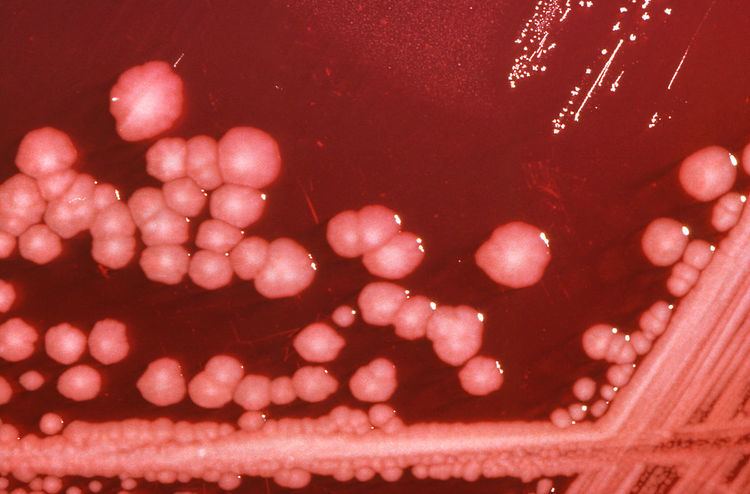Order Enterobacteriales Higher classification Proteus | Phylum Proteobacteria Scientific name Proteus mirabilis Rank Species | |
 | ||
Similar Proteus, Bacteria, Enterobacter, Morganella morganii, Citrobacter | ||
Proteus mirabilis
Proteus mirabilis is a Gram-negative, facultatively anaerobic, rod-shaped bacterium. It shows swarming motility and urease activity. P. mirabilis causes 90% of all Proteus infections in humans. It is widely distributed in soil and water.
Contents
Proteus mirabilis
Diagnosis
An alkaline urine sample is a possible sign of P. mirabilis. It can be diagnosed in the lab due to characteristic swarming motility, and inability to metabolize lactose (on a MacConkey agar plate, for example). Also P. mirabilis produces a very distinct fishy odor.
Disease
This rod-shaped bacterium has the ability to produce high levels of urease, which hydrolyzes urea to ammonia (NH3), so makes the urine more alkaline. If left untreated, the increased alkalinity can lead to the formation of crystals of struvite, calcium carbonate, and/or apatite, which can result in kidney stones. The bacteria can be found throughout the stones, and these bacteria lurking in the kidney stones can reinitiate infection after antibiotic treatment. Once the stones develop, over time they may grow large enough to cause obstruction and renal failure. Proteus species can also cause wound infections, septicemia, and pneumonia, mostly in hospitalized patients.
Treatment
P. mirabilis is generally susceptible to most antibiotics apart from tetracycline and nitrofurantoin, but 10–20% of P. mirabilis strains are also resistant to first-generation cephalosporins and ampicillin.
Characteristics
P. mirabilis can use urea. It can produce hydrogen sulfide gas, and forms clear films on growth media. It is motile, possessing peritrichous flagella, and is known for its swarming ability. It is commonly found in the intestinal tracts of humans. P. mirabilis is not pathogenic in guinea pigs or chickens. Noteworthy is the ability of this species to inhibit growth of unrelated strains, resulting in a macroscopically visible line of reduced bacterial growth where two swarming strains intersect. This line is named the Dienes line after its discoverer Louis Dienes.
The micro-organism tests:
